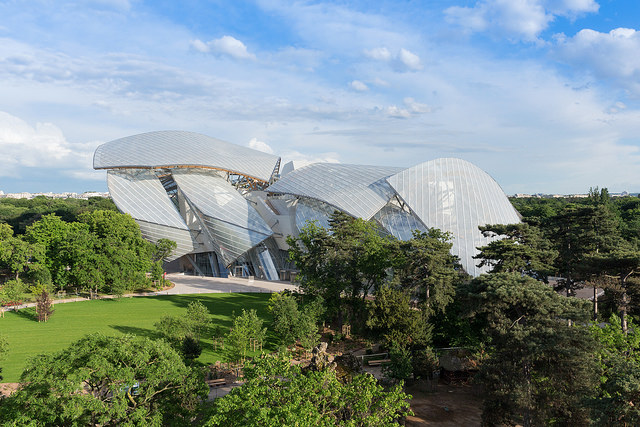Photo by: Creative Commons – Forgemind ArchiMedia
“Gehry is an iconoclast who breaks precedent, taking the icon apart in order to build another, simply in a different way.” ~ Joseph Giovannini
Last week, Joseph Giovannini reviewed Frank Gehry’s Louis Vuitton Foundation museum and cultural center for the Los Angeles Review of Books. The critic celebrated the museum as a masterpiece.He cited the building as the triumphant culmination of Gehry’s years of architectural design experience. The building, said Giovannini, artfully lets visitors appreciate the light and hear the call to explore. Located in Bois de Boulogne, Paris, France, the museum opened in October and critics have already dubbed it an icon. From the outside, the familiar Gehry reflective glass emphasizes fractals. The illusion seems to beckon visitors to discover what’s between those repetitive spaces. Gehry’s answer is a resounding “Find out! Search the whole building!” For instance, the roof becomes a hiking trail and the hiker is rewarded with stunning views overlooking Paris. Trees multiply in reflections as clouds drift overhead.
Inside, visitors are forced to search the galleries. That’s what Gehry intends. Typically, museum trails are designed to comfort visitors with self-guided, easy to follow, stay-on-the-path tours. Gehry encourages wandering hither and yon through intersecting galleries. Expect dead ends and traffic circles, but also surprises along the way. Giovannini’s glowing review certainly entices me.
However, one unexpected and unwelcome surprise related to the building is that Gehry also designed the Twisted Box Bag ($4,400) an iconic fashion accessory for Louis Vuitton’s Paris boutiques. Architectural Review editor Catherine Slessor questions if Gehry has taken the profession into a new realm of starchitect vanity. The merchandising, she points out, has heightened the divide between splashy iconic architecture and socially and environmentally responsible iconic architecture. This question is a perennial topic dividing the philosophical passions within the profession.
